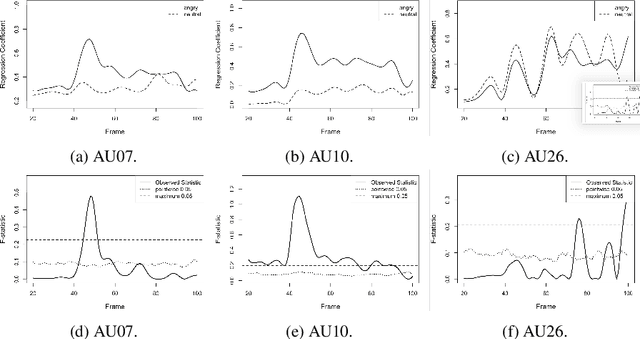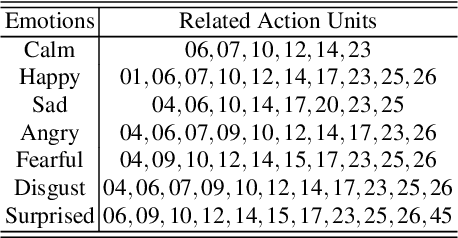Zoranka Desnica
High-fidelity Interpretable Inverse Rig: An Accurate and Sparse Solution Optimizing the Quartic Blendshape Model
Feb 09, 2023



Abstract:We propose a method to fit arbitrarily accurate blendshape rig models by solving the inverse rig problem in realistic human face animation. The method considers blendshape models with different levels of added corrections and solves the regularized least-squares problem using coordinate descent, i.e., iteratively estimating blendshape weights. Besides making the optimization easier to solve, this approach ensures that mutually exclusive controllers will not be activated simultaneously and improves the goodness of fit after each iteration. We show experimentally that the proposed method yields solutions with mesh error comparable to or lower than the state-of-the-art approaches while significantly reducing the cardinality of the weight vector (over 20 percent), hence giving a high-fidelity reconstruction of the reference expression that is easier to manipulate in the post-production manually. Python scripts for the algorithm will be publicly available upon acceptance of the paper.
Accurate, Interpretable, and Fast Animation: An Iterative, Sparse, and Nonconvex Approach
Sep 20, 2021



Abstract:Digital human animation relies on high-quality 3D models of the human face: rigs. A face rig must be accurate and, at the same time, fast to compute. One of the most common rigging models is the blendshape model. We propose a novel algorithm for solving the nonconvex inverse rig problem in facial animation. Our approach is model-based, but in contrast with previous model-based approaches, we use a quadratic instead of the linear approximation to the higher order rig model. This increases the accuracy of the solution by 8 percent on average and, confirmed by the empirical results, increases the sparsity of the resulting parameter vector -- an important feature for interpretability by animation artists. The proposed solution is based on a Levenberg-Marquardt (LM) algorithm, applied to a nonconvex constrained problem with sparsity regularization. In order to reduce the complexity of the iterates, a paradigm of Majorization Minimization (MM) is further invoked, which leads to an easy to solve problem that is separable in the parameters at each algorithm iteration. The algorithm is evaluated on a number of animation datasets, proprietary and open-source, and the results indicate the superiority of our method compared to the standard approach based on the linear rig approximation. Although our algorithm targets the specific problem, it might have additional signal processing applications.
Emotion pattern detection on facial videos using functional statistics
Mar 01, 2021


Abstract:There is an increasing scientific interest in automatically analysing and understanding human behavior, with particular reference to the evolution of facial expressions and the recognition of the corresponding emotions. In this paper we propose a technique based on Functional ANOVA to extract significant patterns of face muscles movements, in order to identify the emotions expressed by actors in recorded videos. We determine if there are time-related differences on expressions among emotional groups by using a functional F-test. Such results are the first step towards the construction of a reliable automatic emotion recognition system
 Add to Chrome
Add to Chrome Add to Firefox
Add to Firefox Add to Edge
Add to Edge